Akame ga Kill! begins as an astonishing study in contradictions. Its ostensibly gruesome contents are offset by a bright, colorful aesthetic and by-the-books character designs, and its supposed through-line of killing and darkness is smothered beneath a crushing blanket of rote, goofy comedy.
This is one of the first striking parts about the show: Akame ga Kill! Just. Isn't. Very. Dark.
"Dark" is a very vague and nebulous term that doesn't really mean anything, but I'm using it intentionally because I'm talking about something vague and nebulous. All sorts of nasty things happen in Akame ga Kill!, but they're done pretty bloodlessly for the most part. I don't mean literally 'bloodless' but, particularly in the first half, the visuals don't go much beyond what you'd expect to find in a violent Jump anime. For instance, relatively early on there is a villainous character who skins his victims alive. When the camera moves to the person he has just killed, they have one of the least bloody corpses in the entire show.
These issues are compounded by the absurdly eclectic setting: a bizarre blend of Western fantasy, an occasional out-of-place feudal Japanese aesthetic, and a few hilarious splashes of modernity. Normally I would say the creators just chose to depict whatever seemed cool in the moment, but Akame ga Kill! is so disinterested in its world except as a vehicle for rudimentary plot beats (there's a brothel, so it's a Japanese brothel, there are bodyguards, so they wear suits and sunglasses like stereotypical bodyguards do) it seems more likely to me there was just no thought put into it.
Akame ga Kill!, like many modern anime, takes several cues from video games and - also like many modern anime - uses them even more childishly than any game ever would. No game would be so nihilistically generic as to call the monsters in its world "Danger Beasts", and no characters in any game would describe monsters as "high-level".
And, on top of everything else, a lot of Akame ga Kill! - possibly even the majority of it - is comedy moments; moments I'd be inclined to call below average even by the abysmal standards of run-of-the-mill anime comedy.
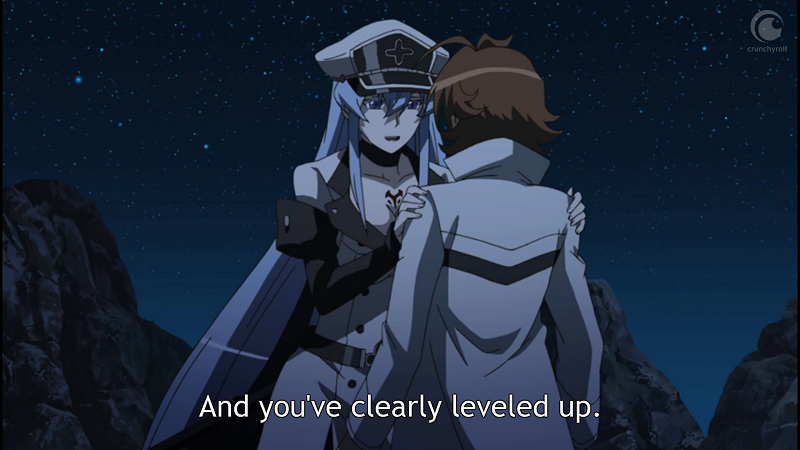 |
| Esdeath knows all about grinding. *rimshot* *emoji* *emoji* *emoji* *emoji* *emoji* *emoji* |
This dovetails neatly into another one of Akame ga Kill!'s fundamental problem: It's too dark.
I know it looks like I'm contradicting myself here, but I'm not. It fails to give the appropriate bite to its violence, but it's still excessive if "dark" violence isn't to your taste. Most of its deaths are all-but laughable (more on the deaths later), but if you don't want to see characters die they're still a punch in the face. The end result seems to be a show for no one.
Moving from the generalities of the show to more concrete elements, we come to the characters. Akame ga Kill! is populated almost entirely by the most uninteresting and one-note personalities. The low-level villains go beyond merely one-dimensional or zero-dimensional and often reach Captain Planet levels of cartoon villainy.
The Jaegers - the antagonistic counterparts to Night Raid - are a bit better. As villains, they at least have more room to be colorful and entertaining even if they lack real depth. The justice-obsessed Seryu Ubiquitous is a more explosively energetic presence than the rest of the cast put together, thanks to some nice, psychotically evil faces and an impeccable, over-the-top performance by Hana Kanazawa. The remorseful killer Bols is arguably the most well-rounded character in the entire show. And Wave, a soldier from the country, is the only long-term character who grows and changes to a significant degree, and essentially becomes the show's deuteragonist. And Esdeath...
Just about anyone, whether they like Akame ga Kill! or not, will tell you that Esdeath, the Jaegers' commander, is the absolute highlight of the show. I wasn't blown away by her as an on-screen presence, and at first I even found her somewhat frustrating. However, she ends up being responsible for most of the show's novel content (her relationship with the protagonist, Tatsumi, almost feels fresh), and she hauls much of the plot forward single-handedly.
I can't finish discussing the characters of Akame ga Kill! without discussing their frequent deaths. One of the show's primary selling points is that it has no qualms about killing off major characters. In terms of pure numbers, yes, Akame ga Kill! earns the 'kill' part of its name, and Night Raid's ranks get quite thin by the end. But, as others have noted before me, this selling point is actually the show's greatest weakness.
Akame ga Kill! is a plot-driven story, and a plot-driven story is driven by its characters. Killing off characters in stories is dangerous business not because it risks upsetting the audience (though there is that, too) but because fewer characters means fewer character interactions to fuel the story's events and push it forward. By slaughtering major characters at almost every opportunity, Akame ga Kill! cuts itself off at the knees over and over again, crippling an already lackluster plot.
The other problem with the incessant deaths is that I just didn't care, because the characters are all so flat I didn't get attached to any of them. I'm not a very emotional person when it comes to stories, but I think most people would be just as unmoved as I was. I actually don't think it's necessary for a character death to make the audience feel sad, but it at least should come at a suitable dramatic moment, whether that be making a heroic sacrifice or being offered up to show off how threatening a villain is, and Akame ga Kill! almost never does this. Was that a deliberate choice, to make the deaths "surprising"? Because after the first one I was never surprised.
You see, the show does try to make you care, but this ends up working against the show. It provides a character's backstory or gives them texture in some other way before they get the axe, but it immediately becomes obvious to the viewer that when a character gets the spotlight they're next in line for the slaughter, making deaths that would be just bland become outright farcical. There are a couple exceptions to the "make character interesting -> kill them" assembly line, but as far as I can tell all of them are anime-original, making Akame ga Kill! perhaps the only time a jammed-on anime conclusion has resulted in an improvement in writing quality.
The "make character interesting -> kill them -> repeat" model I just mentioned has another, even bigger, problem than just turning most of the character deaths into jokes (and that's already a pretty big problem!). If characters get texture and then die, that means the characters who don't die don't get that development. In other words, the most rote characters are the ones who stick around the longest. If a character has a reason for the audience to want them to stay, they go. And if the audience has no reason to want them to stay, they stay. It's spectacularly backwards storytelling.
Between the farcical killings and the clunky 4-koma-style gags, Akame ga Kill! does find the time to have a plot, by which I mean the characters have an overarching goal divided into a number of smaller subgoals, and over the course of the story they take steps, successful or otherwise, to achieve those subgoals. The show's first half is dull and muddled, leaping from one isolated event to another with no lead-up or any attempt to tie things together. All the way back at the beginning of the review I said Akame ga Kill! begins as a study in contradictions, and I chose to say "begins" because it rallies somewhat in the second half. There is an uptick in gore - reaching the vaunted heights of "probably not appropriate for Shounen Jump" - and the story gains direction and momentum, helped in no small part by the fact that it settles into the standard 'good team vs. bad team' equilibrium a battle shounen almost invariably reaches (that's not a criticism; that format is a near-perfect storytelling device).
Things take an intriguing turn at the end, however. The Akame ga Kill! manga is ongoing, so the anime makes some changes in the latter half. I haven't read the manga, but as I understand it the anime skips an arc of the manga and later transitions into anime-original content around episode 20. And this naturally brings with it an anime-original ending.
The finale of Akame ga Kill! is absolutely nuts. Episode 23 consists of a ridiculous, enormous fight whose sheer scale blows every previous battle out of the water. It's not good storytelling, but it's fun and it's huge. Episode 24 actually manages to outdo that city-leveling conflict with a more grounded but very well-realized and surprising final battle. It's not an emotionally involving fight - it's quite pointless, in fact - but it gains poignancy from its coldness. The epilogue that follows is blandly typical - with some added wince-worthy moments to remind you that yes, you're still watching Akame ga Kill! - but the climax itself serves a strong, bittersweet endpoint to the stories of all the characters involved, for which the writers deserve credit.
One incidental note, which I bring up more more because it's funny than anything else, is that the title Akame ga Kill! is something of a misnomer. It would be reasonable to assume that since Akame's name appears in the title she is the key character of the show, but this is not the case. In the first half, she may actually receive the least screen-time out of all the members of Night Raid. She becomes more significant in the second half, and the relationship between her and her sister Kurome is one of its primary conflicts. Thanks to the anime-original finale, the show might even end up earning the name "Akame ga Kill!" by the end.
On the technical side, describing Akame ga Kill!'s visuals as 'efficient' would be generous. I've already discussed the issues with aspects of its visual design, but the character design work almost never rises above 'competent' and there are a handful of designs - most notably Seryu's Imperial Arms, Hecatoncheir - which are downright embarrassing. Credit is due to Akame ga Kill!'s production staff, because as far as I can tell the show's animation quality never really slips despite being a two-cour anime. Its solidly-made cuts are hampered by a reliance on speed-lines and balanced out by an equal number of clunkily implemented stills and near-stills. Overall, it's a wash at best.
Akame ga Kill! has a soundtrack courtesy of Taku Iwasaki, a brilliant composer turning in perhaps the dullest work of his career. Aside from his usual idiosyncratic instrumentation, the music is almost aggressively unmemorable. It's unfortunate, because the same flair he's brought to other projects (Gatchaman Crowds, Katanagatari, JoJo's Bizarre Adventure: Battle Tendency, C - Control, Noragami, etc.) would have been a huge boon to Akame ga Kill!, and the powerful blend of world music, electronica, and rap/hip-hop he usually puts out would have fit the show like a glove. There are a couple of tracks with energy, but on the flip side there are an equal number which don't work at all and feel out of place, while the rest is little more than neutral background noise.
In conclusion, do not watch Akame ga Kill!.
つづく

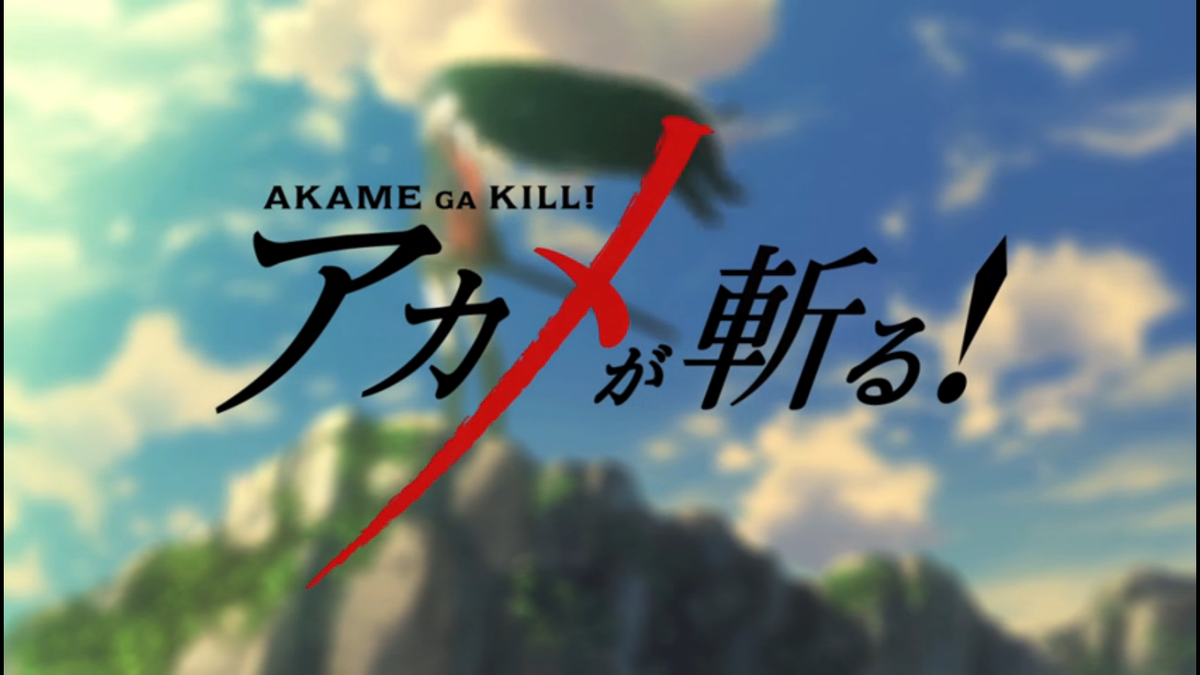

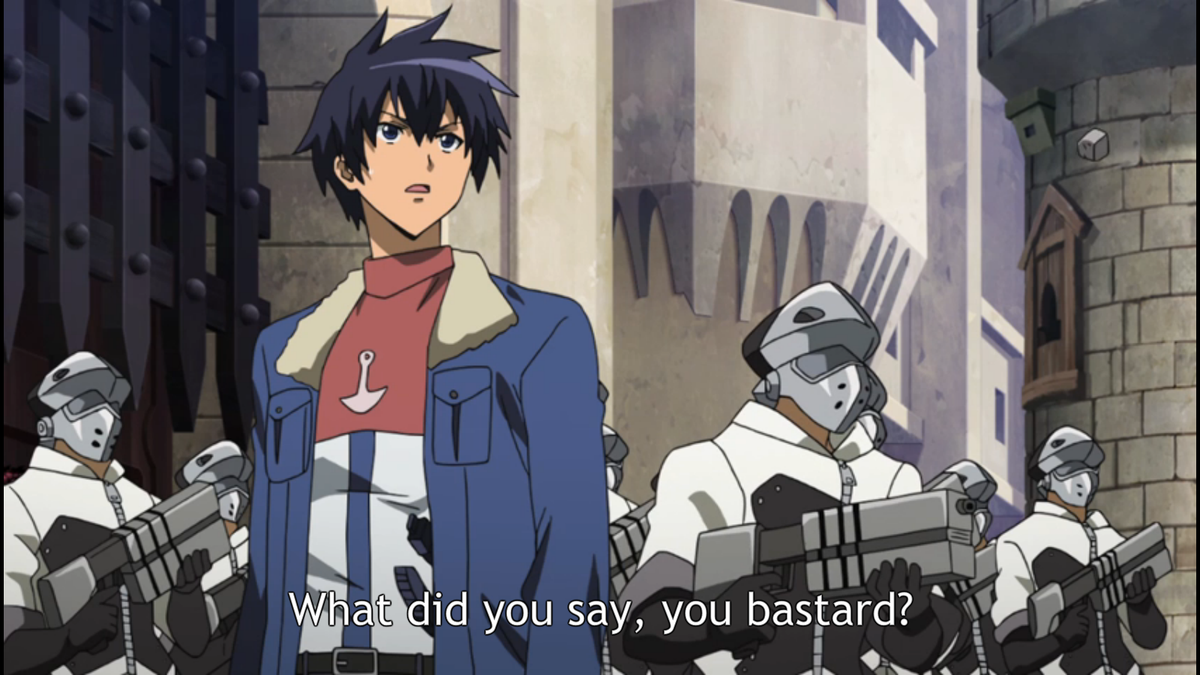
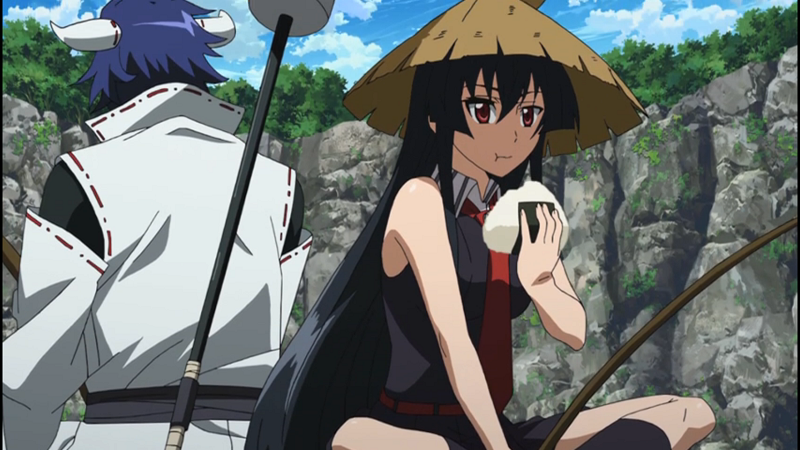
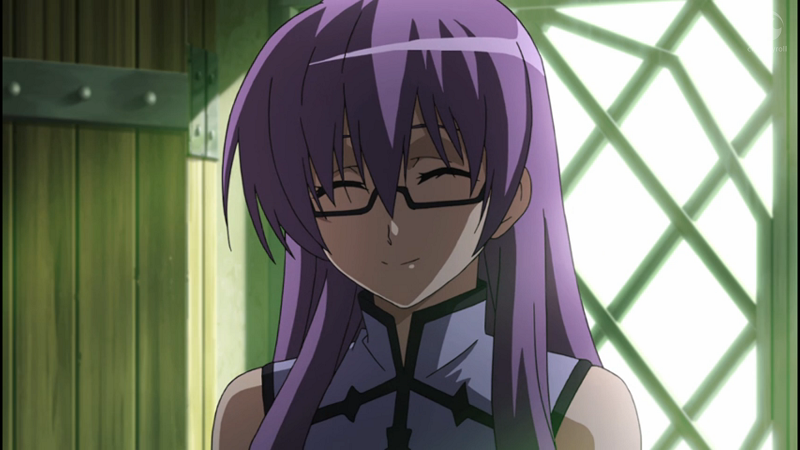
I liked this post
ReplyDelete